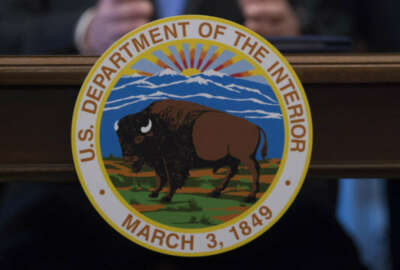Following a recent spike in the number of sexual assault and sexual harassment allegations reported by its employees, the National Oceanic and Atmospheric Administration has rolled out mandatory training for its workforce to complete, and expects to hire more staff to address the problem.
The numbers reported by NOAA over the past few years pale in comparison to the scope of the problem at the Interior Department, which in 2017 reported that more than a third of its employees has experienced some form of harassment on the job.
In a 2018 report to Congress, NOAA detailed 22 allegations of sexual assault that had occurred since 2015, and its 2019 report released this week included another two assault claims.
Acting NOAA director Neil Jacobs told members of the House Natural Resources Committee Thursday that to tackle the problem, the agency needs to get a better handle on its data.
NOAA’s law enforcement branch collected data on sexual assault and harassment cases for 2017, but Jacobs said it didn’t know where to submit the data. As a result, those numbers first got reported in 2018, which appeared to create a spike in the data.
“We would expect, as we develop and roll out this prevention program, that the numbers may go up before they come down, because a lot of these victims don’t exactly know where to report or what the proper process to take is,” Jacobs said. “I wouldn’t be surprised to see an increase before a decrease. But once the program is fully rolled out, I would expect to see the numbers decreasing, particularly over the next year.”
Over the past 12 months, Jacobs said NOAA has done a much better job aggregating these data sets, but called on the agency to create a centralize database to force it to come up with a common format. That, he said, would allow for better analysis in real time.
“Historically, that data exists, but it’s not centralized. It’s not in a common format. If we need the information, we have to go dig it up,” he said. “In some cases, depending on where it’s collected, they may not necessarily know where to report it.”
In response to these reports, NOAA launched a mandatory training course for its employees and supervisors to complete earlier this month. So far, about 40% of its 12,000-employee workforce has completed the online course.
However, Neil Jacobs, the acting head of NOAA, said the agency doesn’t have the authority to require its contracting workforce to participate in that same training and they “probably don’t” know that these resources exist.
The agency has about twice as many contractors as it does federal employees.
Members of the committee expressed concern that NOAA’s Workplace Violence Prevention and Response Program, responsible for coordinating harassment and assault reporting and training, only has a single full-time employee.
Jacobs said the agency is in the process of hiring two victim advocates. An additional three employees, he said, have received training but not credentials.
The rest of this work, he added is carried out by contractors. Jacobs said NOAA set up contracts to hire nine additional investigators last July, and has driven response times down from a matter of weeks to 48 hours for harassment and assault reports.
Most of the assault and harassment claims have come from fishery observers, employees often stationed on commercial fishing ships and processing plants to collect samples and data for NOAA’s mission.
Rep. T.J. Cox (D-Calif.), chair of the oversight and investigations subcommittee, said many of those observers are recent college graduates just starting their careers.
“Federal law requires their presence on fishing vest vessels, but that doesn’t mean crew members and captains also appreciate them being there and enforcing regulations,” Cox said.
Julie Dale, the manager of prevention and education at Standing Together Against Rape, has worked with NOAA on this issue for the past four years. She told the lawmakers that fishing crews have hazed observers, making them shuck scallops, measure crabs and even cook for the crew.
This pattern of behavior, Dale said, can escalate into assault and harassment.
“These duties are not part of the observers’ job, and the intent is to remove them from their assigned position, so they’re not able to perform their job functions,” she said. “Therein lies the power and control: If an observer refuses to participate in these behaviors, they’re not part of the team. And if they do participate, the crew then can hold over their heads that they were not at their assigned jobs.”
Failure to do these tasks can escalate this behavior and can lead to observers not having access to food, sleeping quarters, bathroom facilities or the captain’s deck.
“All of these tactics hold power and control over the observers, which contributes to the sexual violence experienced by these individuals,” Dale said.
Copyright
© 2024 Federal News Network. All rights reserved. This website is not intended for users located within the European Economic Area.

